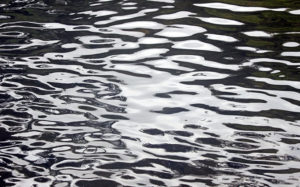Topics
Distinct bacterial variants make winter ulcer diagnostics ever-more important
A complex genetic picture is posing problems for Norwegian salmon farmers managing stocks affected by winter ulcer.
Vaccines and smart sea lice control helping Chilean salmon giant improve sustainability
Salmon rickettsial septicemia and Caligus sea lice are two of the major concerns affecting salmon production in Chile. Thanks to new approaches in fish-health management, Blumar Seafoods is successfully limiting their impact.
Measurement and environment are key to fish welfare
In the last decade, fish welfare has become a prominent driver of aquaculture operations. Angela Ashby, head of clinical services at PHARMAQ Analytiq, believes that the engagement of production staff in this area remains underappreciated.
Urgent action needed to address climate impact on aquaculture, study says
Urgent action is needed to understand and counter the effects of anthropogenic climate change on farmed fish, according to a new review of knowledge to date.
Novel parasiticide part of quest for long-lasting sea lice control in Chile
Currently, almost all Atlantic salmon producers affected by caligidosis have incorporated Alpha Flux as a useful and effective tool in their parasite-control strategy.
Diversity of sea bass pathogen strains highlights challenge in Mediterranean aquaculture
A new study analyzing three strains of the bacterium Vibrio harveyi found among farmed sea bass in the Mediterranean has underlined the diversity of the pathogen, which poses a severe threat to the region’s aquaculture.
Low-light conditions affect tilapia survival and disease resistance
Light can affect the survival, growth and immune response of fish. New research shows that persistent exposure to low-intensity light decreases the survival rate of Nile tilapia but stimulates their disease resistance.
New system to assess gill disease could help salmon producers
Gill disease in Atlantic salmon is caused by a number of pathogens and has different clinical and pathological signs. This means that to date, there has been no standardized methodology developed for field diagnosis, despite the fact that gill health issues are a growing concern for salmon producers in all the major salmon-producing nations.
Taking farmed fish welfare beyond the ‘five freedoms’
Over the last decade, a considerable body of research has demonstrated the capacity of fish to suffer – yet there remain unknowns around what causes the most serious negative impacts on their quality of life.
Tilapia strain resistant to damaging virus could help reduce losses
The discovery of a strain of Nile tilapia resistant to tilapia lake virus (TiLV) may prove useful in the fight to reduce the impact of the pathogen, which has emerged in the last decade and can cause extremely high mortalities among farmed fish.










